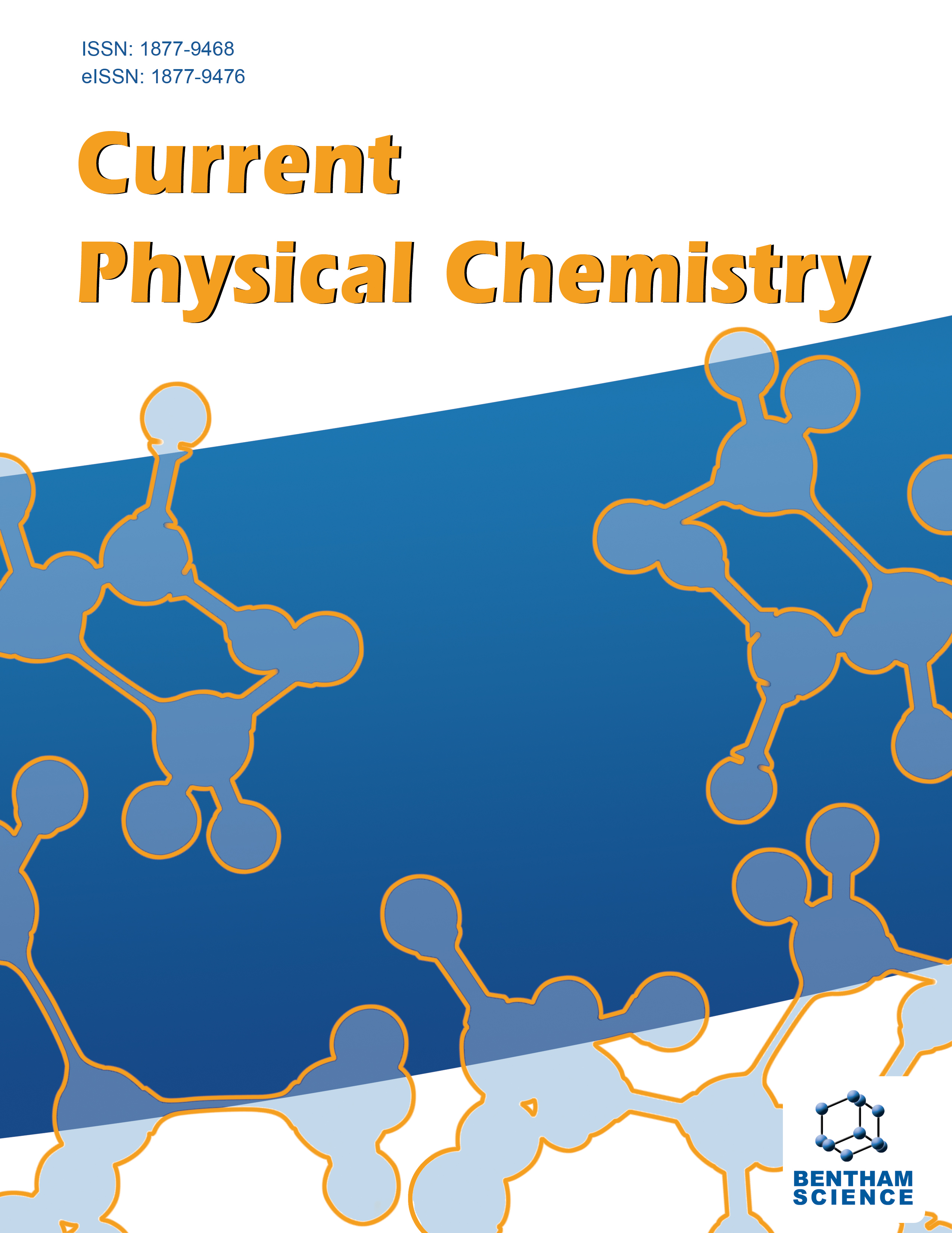- Home
- A-Z Publications
- Current Physical Chemistry
- Previous Issues
- Volume 12, Issue 3, 2022
Current Physical Chemistry - Volume 12, Issue 3, 2022
Volume 12, Issue 3, 2022
-
-
In Silico Design of Molecular Analogues of 2-Butyl-5- pentylbenzene-1,3-diol (Stemphol) as Drug Prototypes for Treatment of Chemical Dependents of Cannabis Sativa
More LessBackground: The chemical dependency caused by recreational drug abuse is highly detrimental to humans and has direct implications for society. Cannabis sativa is still at the top ranking of most used drugs in the world, and its major chemical component is Δ9-THC. This molecule is the main cause of addiction in chronic users, and its action is measured by the CB1 receptor present in the CNS. So far, there is no approved drug Read More
-
-
-
Kinetics of Ring Closure Thiazole Cyclization Using 3-Chloroacetylacetone with Thioamides
More LessBackground: Thiazoles are an important heterocycle that exhibit various bioactivities. Thiazole ring is found in the core structure of various medicinally useful compounds. It shows biological activities like anti-inflammatory, antibacterial, antifungal, antioxidant, cytotoxicity, anticonvulsant, insecticidal, anticancer and antitumor. Thioamides are reported to show bioactivities like antibacterial, antileukemia, antifungal, anti-arth Read More
-
-
-
Reactivity of 9-anilinoacridine Derivatives as Potent Anticancer Agents: A DFT Approach
More LessAuthors: Pubalee Sarmah and Ramesh C. DekaBackground: Anticancer activity of 9-anilinoacridine derivatives has been well reported. Although, the DNA-drug sequence-specific binding of these compounds may be affected by the substituent(s) on the aniline ring, it is still unclear which substituent (NH2 or CH2–OH) on the anilino ring of the compound is the critical element. A good understanding of chemical properties such as steric, lipophilic and electronic properties at the Read More
-
-
-
Effect of Substitution at the Di- and Trivalent Sites of {N[n- C4H9]4]FeIIFeIII[C2O4]3]}∞ on the Nature of Solid State Decomposition Reaction Leading to Various Metal Oxides
More LessAuthors: Debasis Roy, Maciej Zubko, Joachim Kusz and Ashis BhattacharjeeBackground: Oxalate ligand-based metal complexes have long been used for the thermal synthesis of metal oxides. Polymeric homo/heterometallic oxalate-based molecular materials of the general formula, {A]MIIMIII[C2O4]3]}∞, [A = organic cation, MII/MIII: di/trivalent transition metal ion; C2O4: oxalate ligand] provides a molecular source to prepare metal oxides through solid state thermal decomposition primarily due to t Read More
-
-
-
Solvatochromic, Photophysical and DFT Studies of Newer 1-(2- oxo-2-(2-oxo-2H-chromen-3-yl)ethyl)pyridin-1-ium Bromide and 1-methyl-3-(2-oxo-2-(2-oxo-2H-chromen-3-yl)ethyl)-1H-imidazol- 3-ium Bromide Synthesized under Microwave Irradiation
More LessAuthors: Atul S. Patil, Raosaheb S. Patil, Vikas S. Patil and Pramod P. MahulikarBackground: Pyridinium and imidazolium-based compounds show diverse applications with basic skeleton designs in order to achieve improved optical and thermal behavior. Aim: The aim of the study was to design and develop a greener, efficient protocol towards newer pyridinium and imidazolium compounds, and investigate optical, solvatochromic, thermal, and theoretical properties. Objectives: The purpose is to stud Read More
-
-
-
Molecular Modeling Study of Methylxanthines and Tannins as -Secretase Inhibitors
More LessBackground: Alzheimer’s disease (AD) has been characterized by a progressive loss of cognitive functions, especially memory, impacting the daily life and personality of the elderly. In the present study, we performed molecular modeling of methylxanthines and tannins, with pharmacologic actions as stimulants of the Central Nervous System (CNS) and antioxidant, respectively, present in Paullinia cupana Kunth (guarana), ev Read More
-
Most Read This Month
Article
content/journals/cpc
Journal
10
5
false
en


